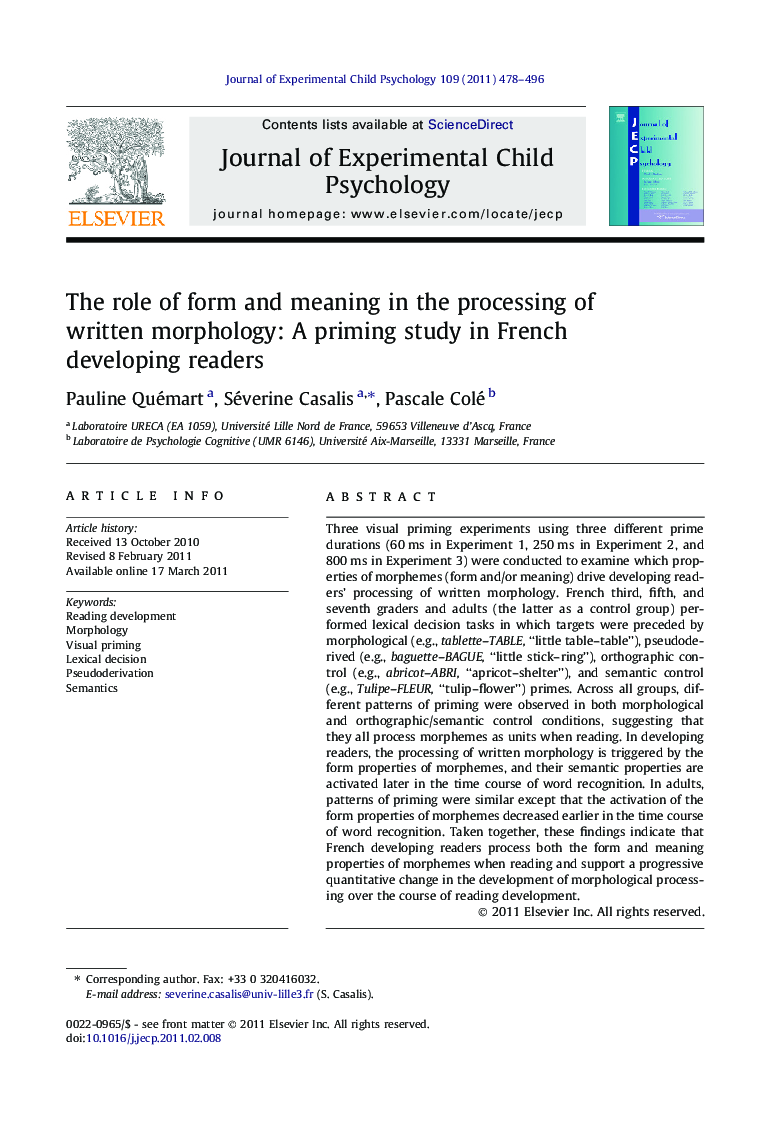| Article ID | Journal | Published Year | Pages | File Type |
|---|---|---|---|---|
| 918502 | Journal of Experimental Child Psychology | 2011 | 19 Pages |
Three visual priming experiments using three different prime durations (60 ms in Experiment 1, 250 ms in Experiment 2, and 800 ms in Experiment 3) were conducted to examine which properties of morphemes (form and/or meaning) drive developing readers’ processing of written morphology. French third, fifth, and seventh graders and adults (the latter as a control group) performed lexical decision tasks in which targets were preceded by morphological (e.g., tablette–TABLE, “little table–table”), pseudoderived (e.g., baguette–BAGUE, “little stick–ring”), orthographic control (e.g., abricot–ABRI, “apricot–shelter”), and semantic control (e.g., Tulipe–FLEUR, “tulip–flower”) primes. Across all groups, different patterns of priming were observed in both morphological and orthographic/semantic control conditions, suggesting that they all process morphemes as units when reading. In developing readers, the processing of written morphology is triggered by the form properties of morphemes, and their semantic properties are activated later in the time course of word recognition. In adults, patterns of priming were similar except that the activation of the form properties of morphemes decreased earlier in the time course of word recognition. Taken together, these findings indicate that French developing readers process both the form and meaning properties of morphemes when reading and support a progressive quantitative change in the development of morphological processing over the course of reading development.
